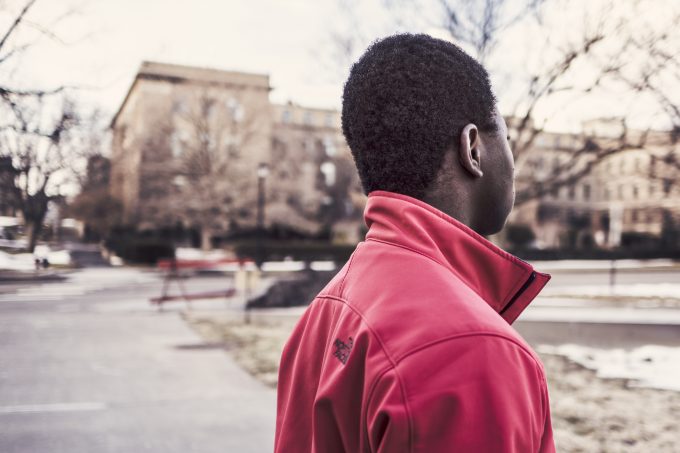Suicide up close: what parents need to know
Dr. Ralph Buonopane, PhD, is the Program Director of the McLean-Franciscan Child and Adolescent Inpatient Mental Health program (Unit 1). Unit 1 is a place for hope and healing for children in psychiatric crisis, offering expert crisis stabilization, assessment, and inpatient mental health treatment in a safe and nurturing environment. To contact our 24-hour referral line, please call please call (800) 333-0338.

13 Reasons Why created much social media buzz and has brought the topic of teen suicide to the forefront in the month since its release. The series graphically depicts the events surrounding a fictional teen’s suicide. 13 Reasons Why is engaging, and the first few episodes draw the viewer in, but as the storyline unfolds, the glamorized and graphic depictions of suicide and revenge storyline only reinforce popular misconceptions about suicide and the stigma of mental illness.
The premise of the storyline, in which the suicide has been completed as the series begins, imparts a mistaken sense of inevitability to suicide, despite evidence that suicide is preventable and its causes are treatable. Schools and professionals across the nation have warned parents against letting teenagers view the show alone, and have pointed out that, for some vulnerable viewers, viewing graphic depictions of suicide may increase the risk that they will act on suicidal thoughts.
Nevertheless, the series is the most talked about series of the year on Twitter, and we are faced with a critical opportunity to open up the discussion and deepen the understanding of teen suicide. Loss of a young person to suicide is a tragedy. As a parent, my heart aches at the painful truth that more than a dozen families in the US will lose a loved one under age 25 tomorrow.
As a professional, I know that teen suicide is preventable. We can all learn to better recognize the problem, learn the warning signs, and get help – and approach teen suicide with compassionate understanding and facts rather than blame & misconceptions.
Suicide ranked as the second leading cause of death for youth (Amer. Foundation Suicide Prevention, 2016). For every completed suicide by youth, it is estimated that 100 to 200 attempts are made. Within a typical high school classroom, it is likely that three students (one boy and two girls) have made a suicide attempt in the past year.
So why do people die by suicide, and what can be done about it? There is never a single cause for suicide. Suicide is the result of many factors that come together. While most adolescent suicide attempts may be precipitated by interpersonal conflicts, 90% of the time suicidal teens are already coping with the pain of a treatable mental health condition – most commonly depression or anxiety. A recent nationwide survey of students found that rates of depression in youth are rising, with more than 1 in 10 youth in MA reporting at least one episode of depression in past year. But more than half of those teens with depression in MA in past year did not receive any treatment (Mental Health America, 2016) First, know the warning signs, then get help.
Know the Warning Signs
Some warning signs may help you determine if a loved one is at risk for suicide, especially if the behavior is new, has increased, or seems related to a painful event, loss, or change. If you or someone you know exhibits any of these, seek help by calling the National Suicide Prevention Hotline at 1-800 273 TALK (8255).
Signs that can be observed in people at risk of suicide*:
- Talking about wanting to die or to kill themselves
- Looking for a way to kill themselves, like searching online or buying a gun
- Talking about feeling hopeless or having no reason to live
- Talking about feeling trapped or in unbearable pain
- Talking about being a burden to others
- Increasing the use of alcohol or drugs
- Acting anxious or agitated; behaving recklessly
- Sleeping too little or too much
- Withdrawing or isolating themselves
- Showing rage or talking about seeking revenge
- Extreme mood swings
If your child demonstrates two or more of these signs, or is talking about wanting to die or kill themselves, then get help:
- If you believe your child is in crisis call 911 immediately and stay with them while help is on the way.
- Call a hotline. The National Suicide Prevention Hotline 1-800 273 TALK (8255).
- Taking an anonymous mental health screening on behalf of your loved one or offering to complete one with them can help you determine whether their symptoms put them at risk, or are consistent with depression or another mood or anxiety disorder. Franciscan Children’s offers an anonymous mental health screening tool on the Mental Health tab of our website.
- Seek support & examples of resilience in the face of emotional challenges.
- Reach out to parent and youth support groups like the Parent Professional Advocacy League and/or the National Alliance for Mental Illness.
- Visit DeconstructingStigma.org
- Listen and share Logic’s new single “1-800-273-8255” ahead of his upcoming album Everybody. The song is an anthem that shares a story of an individual in crisis who finds help.
The stigma is real and only by talking about mental illness will our society be able to accept it and support people whose futures are brighter than their todays.
*Source: National Suicide Prevention Hotline
Franciscan Children’s provides a continuum of care for children and adolescents who need mental health supports including our school- based program, outpatient therapy, community based acute treatment program and crisis response program serving children and adolescents from emergency rooms across the state.
For more information and resources, please visit our website at FranciscanChildrens.org/MHresources.
View All Blog Stories